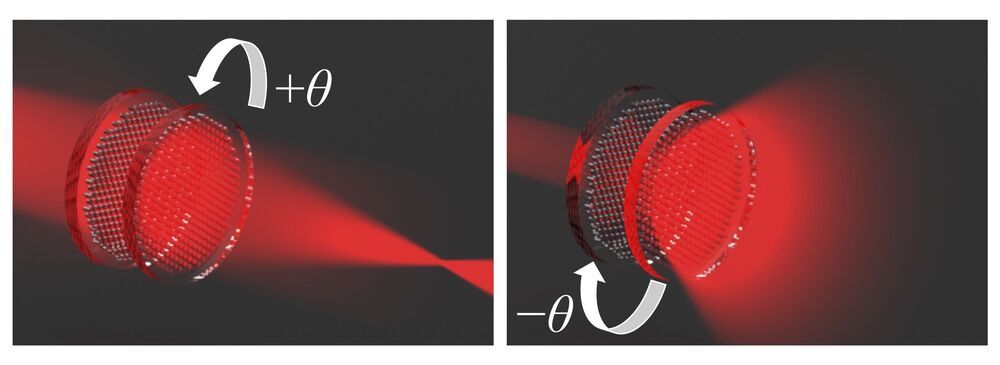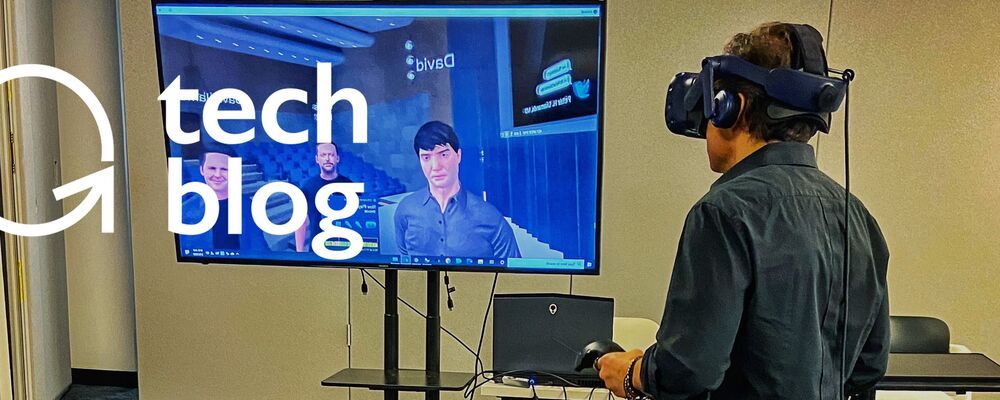Archive for the ‘virtual reality’ category: Page 42
Feb 6, 2021
Researchers create virtual reality cognitive assessment
Posted by Saúl Morales Rodriguéz in categories: biotech/medical, neuroscience, virtual reality
Virtual reality isn’t just for gaming. Researchers can use virtual reality, or VR, to assess participants’ attention, memory and problem-solving abilities in real world settings. By using VR technology to examine how folks complete daily tasks, like making a grocery list, researchers can better help clinical populations that struggle with executive functioning to manage their everyday lives.
Feb 5, 2021
A metalens for virtual and augmented reality
Posted by Jeremy Dylan Batterson in categories: augmented reality, biotech/medical, virtual reality
Harvard’s Capasso Group has scaled up the achromatic metalens to 2mm in diameter. That may not sound like much, but it is plenty for virtual reality contact lenses. The human pupil is 7mm at widest. These guys are going to beat Mojo Lens to the finish line for smart contact lenses.
Read the latest updates on coronavirus from Harvard University. For SEAS specific-updates, please visit SEAS & FAS Division of Science: Coronavirus FAQs.
Feb 2, 2021
Michael Antonov — Formic Ventures — Taking On Huge Challenges — From VR To Longevity Biotechnology
Posted by Ira S. Pastor in categories: biotech/medical, computing, life extension, virtual reality
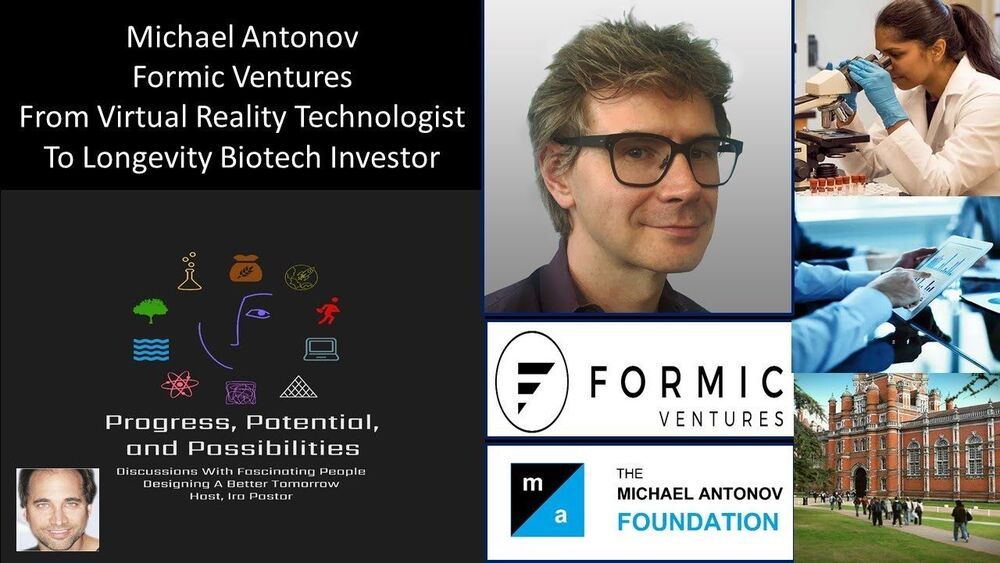
Formic ventures — taking on huge challenges — from virtual reality technologist to longevity biotechnology investor.
Michael Antonov is the Founder and CEO of The Michael Antonov Foundation (https://antonovfoundation.org/), a charitable organization that supports biotechnology research and various causes that improve well being of people around the world, as well as Formic Ventures (https://formic.vc/index.html), an early stage high tech and biotech investment firm focused on prolonging human healthspan and empowering human creativity.
Jan 23, 2021
This VR Mask Will Allow You To Smell the Action
Posted by Shailesh Prasad in category: virtual reality
Jan 13, 2021
The New Techno-Fusion: The Merging Of Technologies Impacting Our Future
Posted by Chuck Brooks in categories: augmented reality, biotech/medical, economics, health, internet, media & arts, quantum physics, robotics/AI, virtual reality
The process of systems integration (SI) functionally links together infrastructure, computing systems, and applications. SI can allow for economies of scale, streamlined manufacturing, and better efficiency and innovation through combined research and development.
New to the systems integration toolbox are the emergence of transformative technologies and, especially, the growing capability to integrate functions due to exponential advances in computing, data analytics, and material science. These new capabilities are already having a significant impact on creating our future destinies.
The systems integration process has served us well and will continue to do so. But it needs augmenting. We are on the cusp of scientific discovery that often combines the physical with the digital—the Techno-Fusion or merging of technologies. Like Techno-Fusion in music, Techno-Fusion in technologies is really a trend that experiments and transcends traditional ways of integration. Among many, there are five grouping areas that I consider good examples to highlight the changing paradigm. They are: Smart Cities and the Internet of Things (IoT); Artificial Intelligence (AI), Machine Learning (ML), Quantum and Super Computing, and Robotics; Augmented Reality (AR) and Virtual Reality Technologies (VR); Health, Medicine, and Life Sciences Technologies; and Advanced Imaging Science.
Jan 11, 2021
Wi-Fi’s biggest upgrade in decades is starting to arrive
Posted by Raphael Ramos in categories: computing, mobile phones, virtual reality
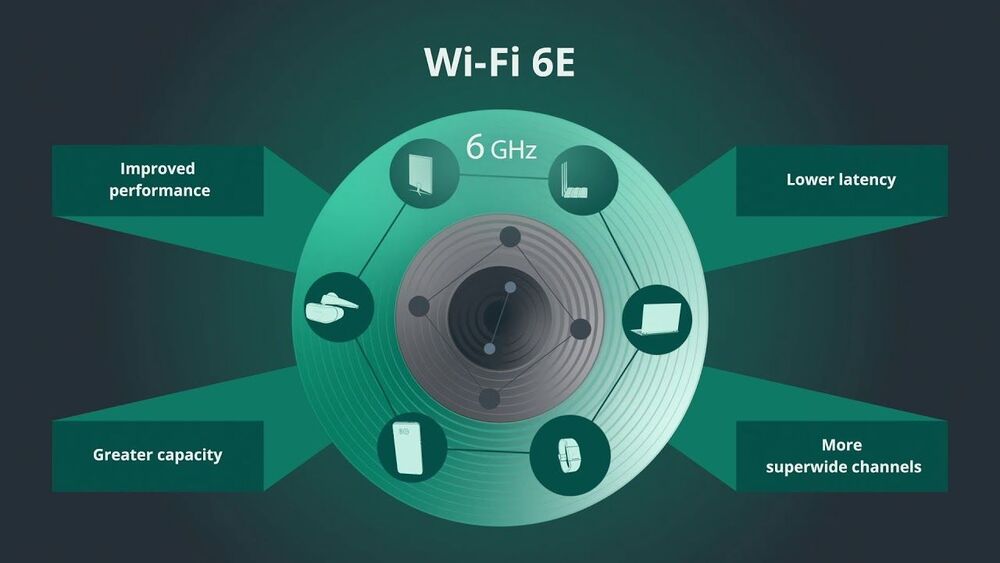
Wi-Fi 6E devices are now being certified by the Wi-Fi Alliance. Smartphones, PCs, and laptops are expected in the first quarter of 2021, while TVs and VR devices should follow in the second quarter of 2021.
Jan 6, 2021
Convex to concave: More metasurface moiré results in wide-range lens
Posted by Saúl Morales Rodriguéz in categories: computing, drones, engineering, mobile phones, particle physics, virtual reality
The odd, wavy pattern that results from viewing certain phone or computer screens through polarized glasses has led researchers to take a step toward thinner, lighter-weight lenses. Called moiré, the pattern is made by laying one material with opaque and translucent parts at an angle over another material of similar contrast.
A team of researchers from Tokyo University of Agriculture and Technology, TUAT, in Japan have demonstrated that moiré metalenses—tiny, patterned lenses composed of artificial ‘meta’ atoms—can tune focal length along a wider range than previously seen. They published their results on November 23 in Optics Express.
“Metalenses have attracted a lot of interest because they are so thin and lightweight, and could be used in ultra-compact imaging systems, like future smart phones, virtual reality goggles, drones or microbots,” said paper author Kentaro Iwami, associate professor in the TUAT Department of Mechanical Systems Engineering.
Dec 27, 2020
VR leaps into the disruptive phase
Posted by Omuterema Akhahenda in categories: augmented reality, education, robotics/AI, virtual reality
In 2016, combined venture investments in VR, AR, and mixed reality (MR) exceeded $1.25 billion. In 2019, that number increased more than 3X to $4.1 billion. And today, major players are bringing new, second-generation VR headsets to market that have the power to revolutionize the VR industry, as well as countless others. Already, VR headset sales volumes are expected to reach 30 million per year by 2022. For example, Facebook’s new Oculus Quest 2 headset has outsold its predecessor by 5X in the initial weeks of the product launch. With the FAANG tech giants pouring billions into improving VR hardware, the VR space is massively heating up. In this blog, we will dive into a brief history of VR, recent investment surges, and the future of this revolutionary technology.
“Virtual reality is not a media experience,” explains Bailenson. “When it’s done well, it’s an actual experience. In general our findings show that VR causes more behavior changes, causes more engagement, causes more influence than other types of traditional media.”
Nor is empathy the only emotion VR appears capable of training. In research conducted at USC, psychologist Skip Rizzo has had considerable success using virtual reality to treat PTSD in soldiers. Other scientists have extended this to the full range of anxiety disorders.
Dec 23, 2020
Holotron presents a full-body exoskeleton for walking in VR
Posted by Brent Ellman in categories: computing, cyborgs, neuroscience, virtual reality
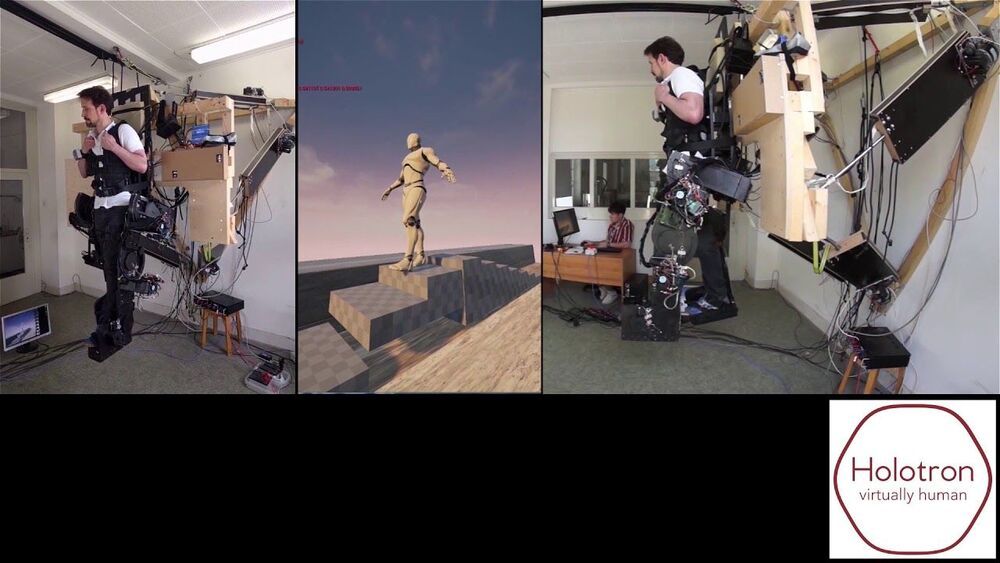
The full-body exoskeleton lets you feel and control all the forces your avatar feels.
The Holotron is a full-body exoskeleton, with several possible realizations for life-like control of any humanoid avatar, including implanted brain-computer interfaces.
Continue reading “Holotron presents a full-body exoskeleton for walking in VR” »





